Legend has it that in 1918, Louis Cartier presented the first examples of his iconic rectangular watch, the "Tank", to the American General John Joseph Pershing and some of his officers. Whether true or not, the "Tank" watch is closely linked to the turbulent history of the First World War and symbolizes the changing times.
Tank Clock: A Symbol of Innovation and War History
Rarely can such a significant war be linked to such a positive invention as the creation of the Cartier Tank watch. The First World War ended in 1918, while the American troops who intervened in the conflict in 1917 successfully used tanks. These new, mobile war machines, called "tanks", were a groundbreaking innovation on the battlefields at the time. In memory of and in honor of the brave commanders, Cartier presented the "Tank" watch - named after the tanks that supported the soldiers.
Design and inspiration of the Cartier Tank watch
The Tank watch from Cartier is heavily inspired by the design of the British Mark IV tanks. Its angular, flat shape offers a minimalist but elegant appearance. With just two classic Breguet hands and no additional functions, it embodies timeless simplicity. Particularly striking are the Roman numerals, which have been part of the design from the very beginning and are still a trademark of the Tank watch today. These unique design elements make the Cartier Tank one of the most famous and sought-after luxury watches in the world.
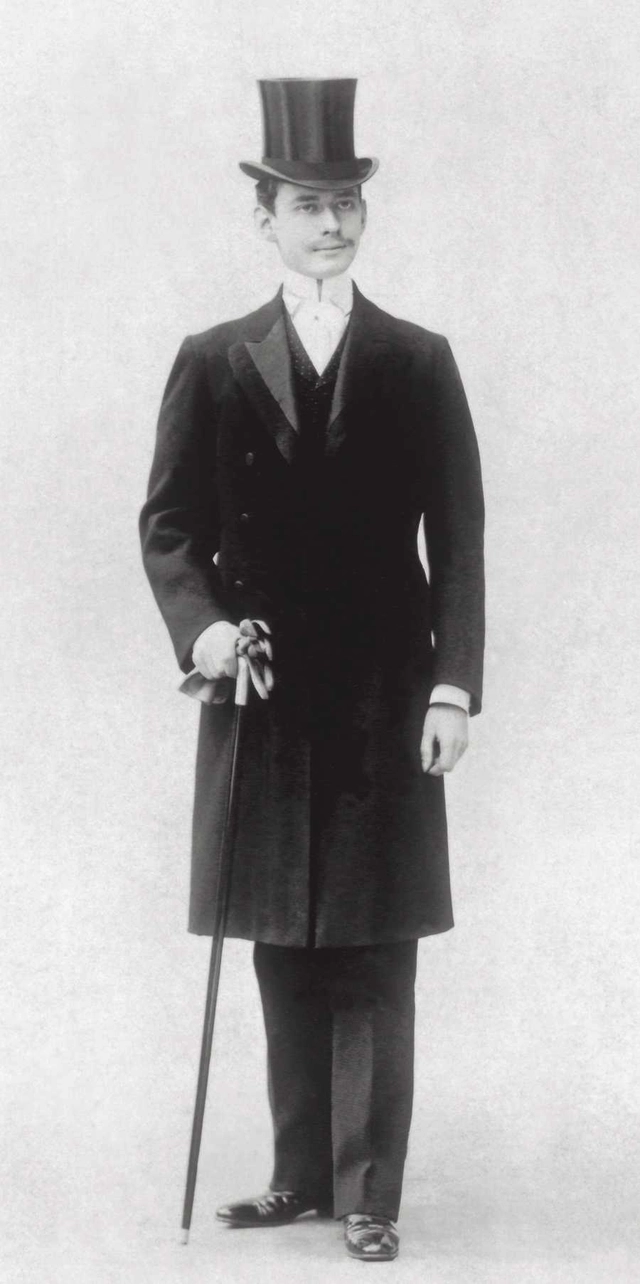
The Birth of an Icon: The Cartier Tank Watch and its Legendary Path
Whether General Pershing was aware that in 1918 he was holding the first watch in a series that would be world-famous almost 100 years later remains speculation. But Cartier's "Tank" watch is one of the house's greatest icons today, alongside the "Santos" and "Pascha" models, and celebrated its 100th birthday in 2017. In the 1920s, the Tank was more than just a new wristwatch - it revolutionized the way watches were worn on the wrist.
The Tank as a pioneer for modern wristwatches
In the early years of the 20th century, wristwatch acceptance was still low. Many manufacturers converted pocket watches to wristwatches by adding mounts. However, Cartier set a new standard with the Tank watch, creating a design that saw the watch itself as part of a total work of art. The bracelet merged seamlessly into the case, making the watch more than just a functional device - it was a fashion statement. Another innovative feature was the square case, which was an unusual choice at the time, as watches were usually round.
The inner values of the Cartier Tank: precision and design
Not only was the design revolutionary, the inner values of the Tank watch also set standards. The renowned watchmaker Edmond Jaeger was responsible for the precise movement. From 1906 onwards he worked with the Swiss manufacturer LeCoultre & Cie, which supplied the movements - and thus laid the foundation for the famous watch brand Jaeger-LeCoultre.
Another striking feature that sets the Tank apart from other watches is the sapphire cabochon on the winding crown. This blue-bright gemstone that adorns the crown was first introduced by Cartier in the 1920s and remains an unmistakable trademark of the Tank collection to this day.
The Tank Watch on Screen and in the Fashion World
In the 1920s, the Tank watch quickly gained popularity and found its way into the film world. The watch's first major appearance was in the 1926 silent film "The Son of the Sheikh" starring Rudolph Valentino. Soon after, other Hollywood stars such as Clark Gable and Gary Cooper also wore the Tank. Its popularity continued to grow when artists such as Andy Warhol and many other celebrities discovered the watch as a fashion accessory.
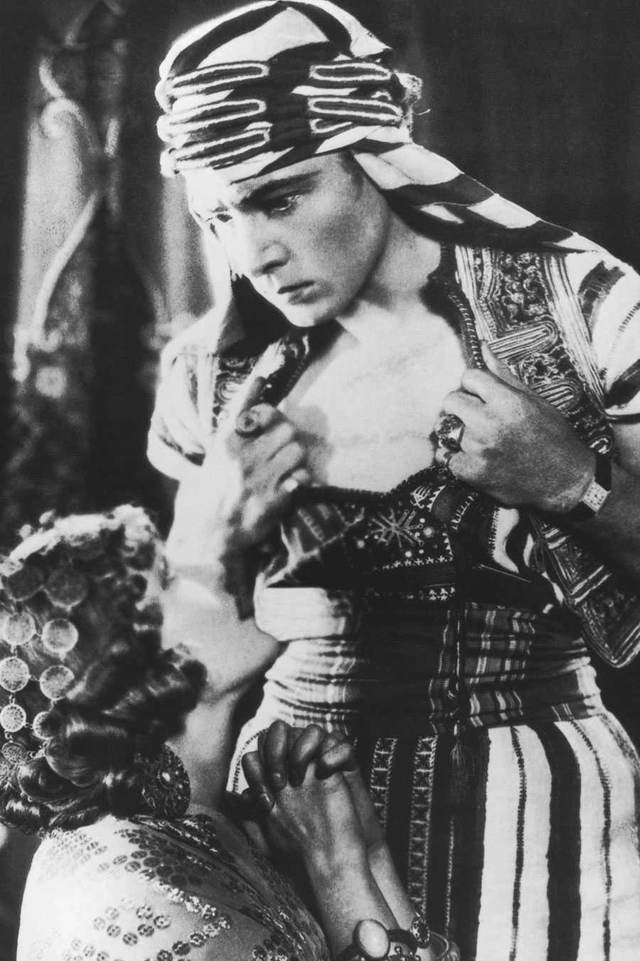
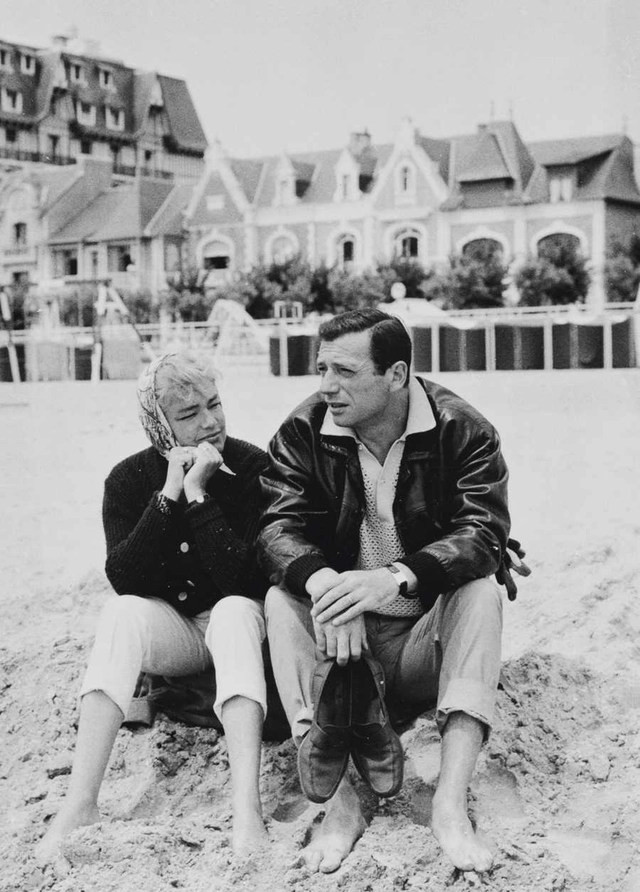
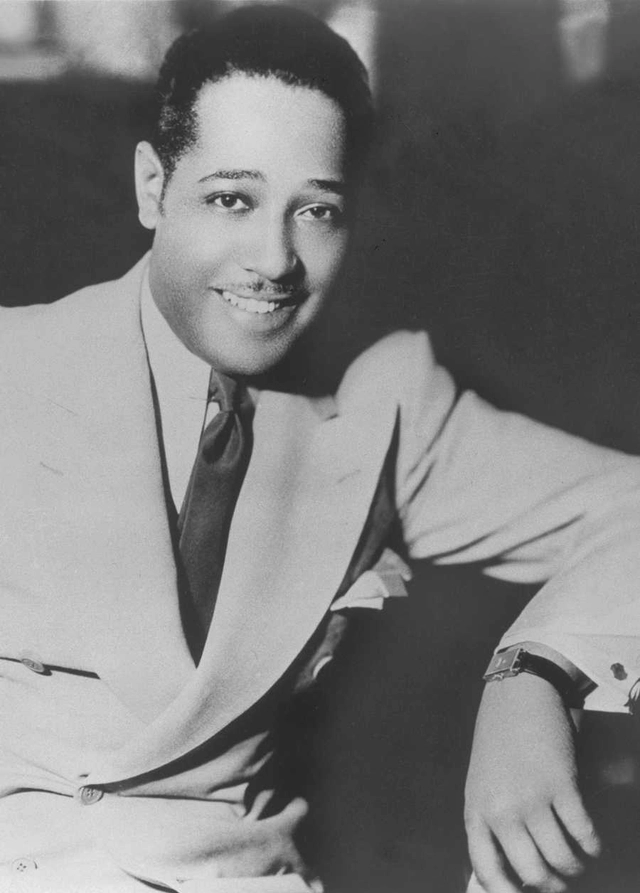
| »The Son of the Sheikh« - with its first film appearance, the watch gained notoriety. Many stars around the world sooner or later wore Tank | Two greats of French film on the beach of the Côte d'Azur: Simone Signoret and Yves Montand cut a fine figure – both with their Tank | Duke Ellington: The jazz legend opted for the unusual, rectangular watch from France in the 1920s. Also in the picture: Tank Cintrée |
Cartier Tank watch as an investment: Historical models in focus
Historical models of the Cartier Tank watch have long since become real investments. These sought-after timepieces are rarely found on the market and are mainly traded in specialised auction houses such as Antiquorum. A Tank watch from the 1920s can easily fetch prices of 30,000 euros and more - depending on the model, case shape and rarity. Some Tank models that are particularly rare stand out and achieve impressive sales prices.
The Tank Cintrée: A particularly valuable variant
Among the historical Tank models, the elongated Tank Cintrée stands out in particular. Its case is not only longer than that of the classic Tank Normale , but also ergonomically curved, which gives it a special elegance. The Tank Cintrée was presented in 1921 and from the end of the 1920s was equipped with Arabic numerals on the dial - a unique selling point compared to other Tank models that had Roman numerals. Due to its rarity and unique design, the Tank Cintrée is particularly valuable today.
Tank Normale: Cheaper, but also a rare rarity
The Tank Normale is cheaper than the Cintrée, but is also very rare, especially in the early years. The price for a model from these years varies between 8,000 euros and 15,000 euros or more, depending on the condition and rarity - if such a watch is even available on the market.
Increase in value and auction success: Cartier watches in focus
The continuous increase in value of Cartier Tank watches in recent years is astonishing. In addition to well-known valuables such as the Rolex Daytona (Paul Newman version), Cartier models also achieve high hammer prices at prestigious auctions. The Tank watch is now one of the most sought-after collector's watches in the world and offers not only aesthetic but also financial value.
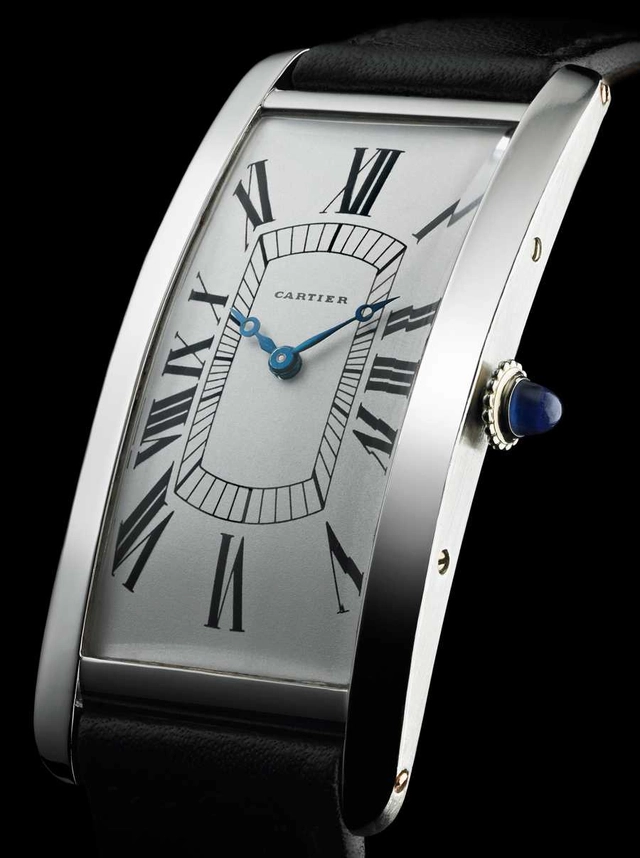
The Evolution of the Cartier Tank Watch: From the 1920s to Today
As early as the 1920s, Cartier began using the Tank watch as a platform for new variants - a strategy that the house continues to pursue today. The domed Tank Cintrée was just the beginning, followed by the Tank Chinoise in 1922, which impresses with its striking case and eye-catching lugs. These design features were inspired by the arcades of Chinese temples and give the watch an exotic charm. Models of the Tank Chinoise , which are available in gold as well as with diamonds or stone settings, today fetch prices between 5,000 and 15,000 euros, depending on their condition - in some cases the prices can be even higher.
The Tank à Guichets: Another Masterpiece
Another rare and extremely valuable model is the Tank à Guichets , which was introduced in 1928. Instead of a conventional watch glass, this Tank watch has a brushed plate made of gold or platinum into which digital disc displays for the hours and minutes are set. The hour jumps and the winding crown is located at the unusual position of twelve o'clock to emphasize the extraordinary design. These historical models are hardly affordable anymore, but the Tank à Guichets was later reissued.
Further milestones: chronographs and reversible watches
1928 was also the year that Cartier presented the Tortue monopusher chronograph , another innovative model. This was followed in 1932 by the Cabrio-Réversible (later known as the Tank Basculante ), a reversible watch that became famous for its versatility and elegance and is still available today. These models also command high prices, even in their basic version.
The Tank in the 1950s and the transformation of the company
In the 1950s, the Tank watch was an integral part of the luxury watch scene and was worn by stars such as Brigitte Bardot and Juliette Gréco. But the company also experienced turbulent times: in 1965, Pierre Cartier died and the company fell out of family ownership. It was not until the 1970s, under the leadership of Robert Hocq and Joseph Kanoui, that Cartier was able to get back on track for success and open up new markets.
Les Must de Cartier: The Tank in a New Era
A key moment in the history of the Tank watch was the launch of the Les Must de Cartier collection in 1974. Together with Alain Dominique Perrin, Robert Hocq developed a new concept to appeal to younger audiences. This collection used a new material: vermeil, in which the case was made of 925 sterling silver and plated with 20 microns of gold. Quartz movements also found their way into Cartier watches. Although the technology and materials changed, the Tank remained true to its basic shape - with the characteristic rectangular case, blue hands, Roman numerals and the iconic blue sapphire cabochon on the crown.
Fashionable accents: The tank as an accessory
However, the Must de Cartier collection dropped an important design element: the Roman numerals. Instead, colorful dials in different colors were introduced, giving the Tank watch a modern, fashionable look and making it a sought-after accessory for the fashion-conscious customer.
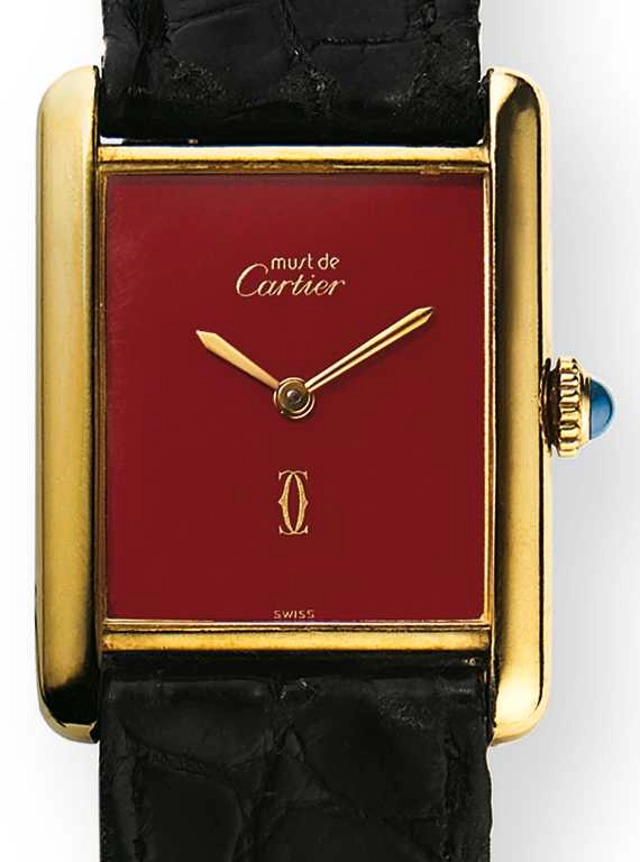
Getting started in the world of Cartier Tank watches: Affordable models for collectors
The entry-level prices for Cartier Tank models are now quite affordable and offer an attractive opportunity to immerse yourself in the world of the legendary watch house. Used models are available from 400 to 500 euros, while well-preserved quartz or hand-wound models can be found in the price range of 700 to 1,000 euros on platforms such as Chrono24. The Tank watches are not only available in vermeil (sterling silver with gold plating), but also in silver, solid gold or platinum. The prices for models made of solid gold or platinum are significantly higher than those of the gold-plated versions.
Tank watch: A timeless classic with modern variations
Even after almost 100 years, the Tank watch remains a synonym for timeless elegance. Cartier uses the line to continually create new designs. An outstanding example is the Tank Américaine , which in 1989 adopted the ergonomic, curved case of the Tank Cintrée . Unlike its historical model, however, the Tank Américaine is waterproof, making it a practical and modern companion.
The Tank Etanche: The first waterproof classic
As early as 1931, at the request of the Pasha of Marrakesh, Cartier developed the Tank Etanche , the first waterproof version of the Tank watch. This innovation marked an important step in the further development of the Tank series and contributed to the popularity of the watch.
Modern developments: The Tank Française and its popularity
In 1996, Cartier launched the Tank Française , a variant of the Tank watch with a metal bracelet. This more robust, bulkier version is available in various material combinations and offers both automatic and quartz movements. To this day, the Tank Française remains a bestseller in the Cartier collection and enjoys great popularity around the world.
Prices of the Tank Française on the used market
On the used market, prices for Tank Française models in stainless steel start at just under 2,000 euros, while precious metal versions are available from around 3,500 euros. For models with stone settings, prices can even rise above 5,000 euros, depending on the condition and features of the watch.
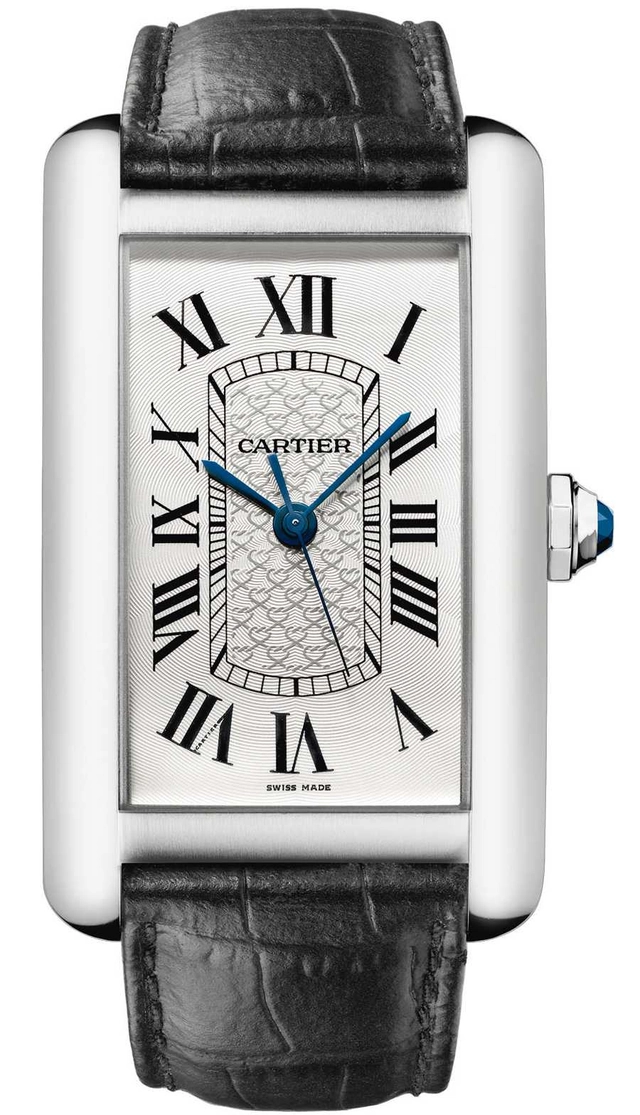
outro
Time does not stand still for Cartier either: The Tank watch in modern times
Time does not stand still in the world of watches either: in 2008, Cartier introduced its own manufacture movement, which premiered a year later in the Tank Américaine . The 9452 MC caliber with the Geneva hallmark impresses with a flying minute tourbillon, the cage of which is visible in the form of the characteristic Cartier C. Another highlight in the history of the Tank watch was in 2012, when Cartier launched three new models that took up historical elements and gave them a modern interpretation.
Modern Interpretations of the Tank Clock
The Tank Louis Cartier from 1922 inspired the Tank Louis Cartier XL , which modernized the classic design with a flatter case just over five millimeters high. The Tank Américaine and Tank Française were given another variant with the Tank Anglaise , which ensures an international balance. But the Tank Folle also set new accents: It broke with the traditional rectangular shape and presented itself in an abstract design, but remained true to its typical features - including the cabochon crown and the characteristic hands and the dial with Chemin-de-Fer minute track.
The Tank Clock as a Witness of the Centuries
The Tank remains a witness to history that has retained its fascination for over a century. With the first 100 years almost complete, watch lovers can look forward to the next 100 years with excitement. But one thing is certain: the Tank will continue to be an undisputed classic in the world of watches.

